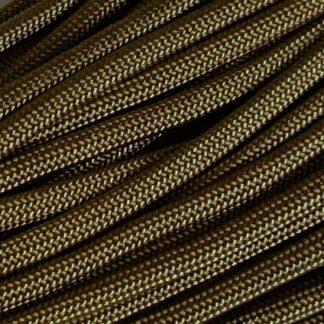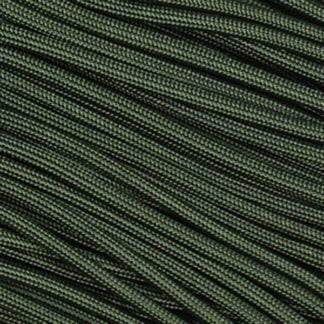Paracords
A life-changing resource, the paracord (or the 550 cord because of its 550-pound breaking test) was originally used in the suspension lines of US parachutes during the Second World War, however now it can be found anywhere from survival camps to as well as by astronauts on space missions.
Our seven-strand paracords are manufactured by a certified US Government contractor and come in a wide range of colours, from: black, olive, white, woodland camo to neon orange, neon pink and light pink.
Popular amongst hikers, survivalists and outdoor enthusiasts, paracords are approximately 4mm thick, available in various lengths and all made of 100% nylon. Whatever your outdoor adventure, Rope Source provides only the best, superb-quality products so you can rest assured we’ve got you covered and keep you safe.
We know how important our paracords can be to your wilderness exploring. Check out the full range below and explore our other outdoor survival gear, such as bungee cords, nylon ropes and tarpaulin. Shop today for fast UK delivery!
Ways you can use survival paracord
Paracords are the ultimate survival tool. But what are all the wide ways that you can use one?
- If there’s no suture kit, the inner threads of a paracord can be used as an emergency alternative to stitch up wounds
- For an injured arm or shoulder, create a sling using a stick, a soft material or jacket and a paracord to tie around the neck, wrist and elbow
- For In an emergency, paracords can be used to make makeshift stretchers
- As Paracords can be used as rescue lines to help pull someone to safety
- With paracords, you can tie slip knots, clove hitches, figure ‘8’ knots and girth knots
- Create tripwires with thin paracords, to protect your camp
- Paracords can be used to create makeshift restraints or handcuffs; when needed
- You can use paracords and a stick to make a makeshift stone-throwing sling for hunting or protection
- Paracords can be used to make makeshift fishing lines and nets
- Create your own DIY a survival bracelet or belt with paracord
To discuss how paracords could work for you, get in touch on 01204 897642 or contact us by form; we’re always happy to help.
-

US 550 Paracord Acid Dark Brown (1)
-

US 550 Paracord Chocolate Brown (5)
-

US 550 Paracord - Black (6)
-

US 550 Paracord - Rose Pink (6)
-

US 550 Paracord - Neon Orange (6)
-

US 550 Paracord - Neon Pink (6)
-

US 550 Paracord - Olive Drab (6)
-

US 550 Paracord - White (6)
-

US 550 Paracord - M Camo (6)
-

US 550 Paracord Walnut Brown (1)
Frequently asked questions about paracords
What are paracords used for?
Typical uses for paracord include attaching equipment to harnesses, to avoid losing small or important items, for tying luggage and large bags to vehicle racks, to help secure camouflage nets. Generally, the main theme of us with paracords is wilderness and survival.
Why do people wear paracord?
People mainly wear paracord as a bracelet. These bracelets are survival tools which contain additional tools and supports like whistles, compasses and fire starters – often worn by hikers, campers, and almost anyone who enjoys the outdoors.
Can paracord hold a person?
Yes – a single strand of paracord is said to be able to support an average sized adult in a hammock (for a short amount of time, before stretching). Paracord, also known as 550 cord, has a 550-pound breaking test.
Can you get paracord wet?
Yes – you can get paracord wet. Paracord will shrink slightly the first time that you get it wet, but it soon stabilises. However, other than this, there are no other effects caused by paracord getting wet.
Nylon or polyester paracord?
Most paracord uses prefer nylon paracord. This is because nylon feels considerably more natural and is also elastic, compared to polyester – making it far easier to work with, especially for knotting.










